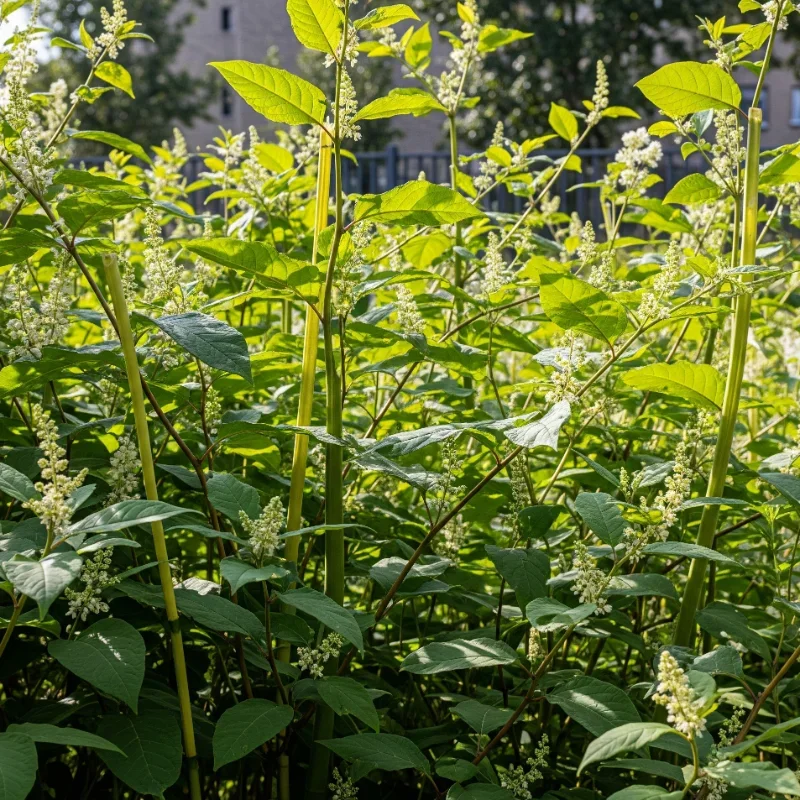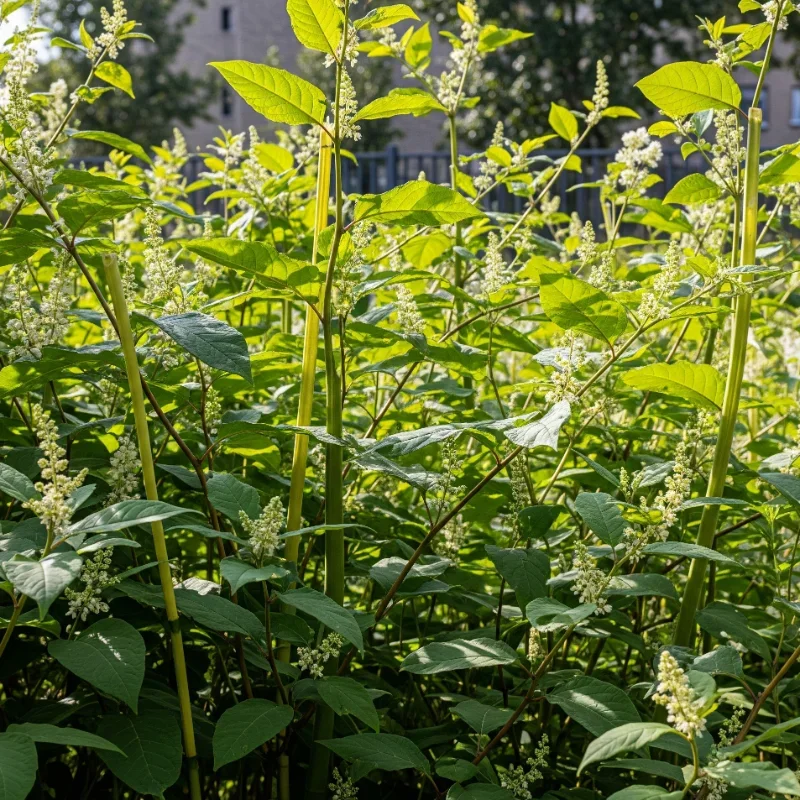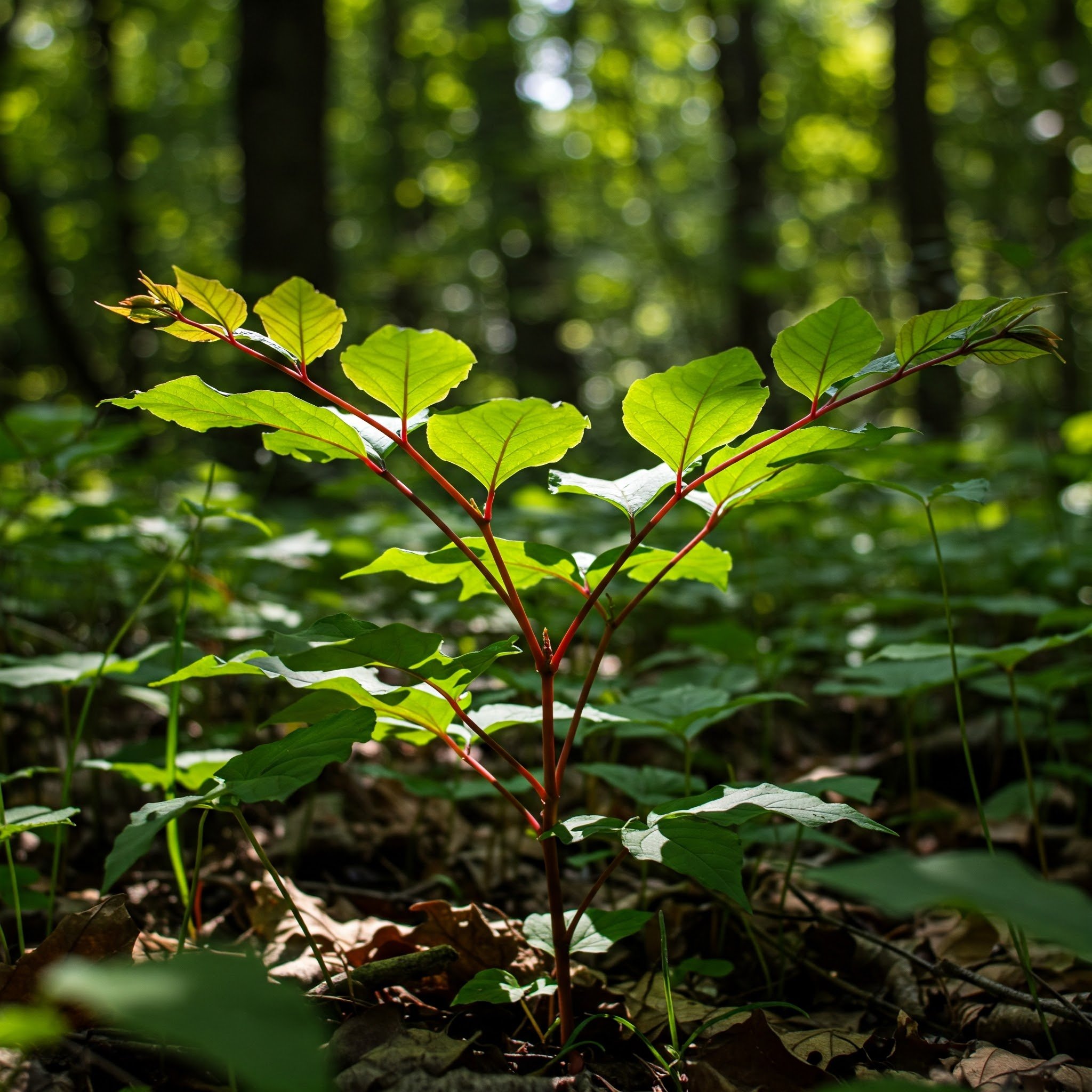How to Get Rid of Japanese Knotweed
Discover proven methods to eliminate Japanese knotweed from your property. Expert tips, DIY solutions, and professional guidance for permanent removal.
Well, folks, if you've landed here, chances are you're staring at what looks like innocent bamboo-like stems in your garden, but boy oh boy, you're actually facing one of nature's most stubborn invaders. Japanese knotweed isn't just any old weed; it's the Godzilla of the plant world, and it's probably already plotting to take over your entire property while you sleep!
Here's the kicker: this green menace can grow through concrete, damage foundations, and tank your property value faster than you can say "herbicide." But don't panic just yet! Whether you're a weekend warrior with a shovel or someone who's ready to call in the cavalry, I've got your back. Let's dive into the nitty-gritty of how to get rid of Japanese knotweed once and for all.
What Makes Japanese Knotweed Such a Nightmare?
Before we jump into battle strategies, let's understand our enemy. Japanese knotweed (Fallopia japonica, for you science buffs) came to our shores as an ornamental plant back in the 1800s. Talk about a houseguest that overstayed its welcome! This invasive species spreads like wildfire through underground rhizomes that can extend up to 7 meters horizontally and 3 meters deep. Yikes!
The real problem? Even a tiny fragment the size of your fingernail can sprout into a full-blown infestation. It's like dealing with a plant version of the Terminator: "I'll be back!"
Identifying the Green Villain in Your Garden
Spring Appearance
In spring, you'll spot reddish-purple shoots that look oddly like asparagus spears. Don't be fooled by their innocent appearance! These bad boys can grow up to 10cm per day. That's right, while you're sipping your morning coffee, this plant is basically on steroids.
Summer Characteristics
Come summer, you're looking at:
Heart-shaped leaves arranged in a zigzag pattern
Hollow stems with purple speckles (kinda like freckles, but evil)
Clusters of creamy white flowers that, admittedly, look pretty darn nice
Autumn and Winter Signs
When fall rolls around, the leaves turn yellow and drop, leaving behind brown, brittle canes that'll stick around all winter like unwanted party guests.
DIY Methods: How to Get Rid of Japanese Knotweed on Your Own
Alright, roll up your sleeves! If you're the DIY type who thinks, "I've got this," here are some methods that might work, though I'll be honest, it's gonna take some serious elbow grease and patience.
The Cut and Cut Again Method
This approach is all about persistence, folks. Here's how it goes:
Cut the stems near ground level every two weeks during growing season
Bag everything up immediately (and I mean everything!)
Never, ever compost this stuff or you'll spread it around
Keep at it for at least three years (yes, years!)
The idea is to exhaust the plant's energy reserves. Think of it as wearing down your opponent in a boxing match, except your opponent is a plant that doesn't know when to quit.
Smothering Technique
If cutting isn't your thing, try suffocating the beast:
Cover the affected area with heavy-duty landscape fabric
Layer on thick cardboard (time to raid those Amazon boxes!)
Top with at least 20cm of mulch or soil
Leave it covered for at least 5 years
Yeah, you read that right. Five years. Japanese knotweed plays the long game, so you've gotta play it longer.
Digging Deep (Really Deep)
Some brave souls attempt excavation, but here's the thing: you need to dig at least 3 meters deep and 7 meters around the visible growth. That's basically creating a swimming pool-sized hole in your garden! Plus, you'll need to:
Sift through every bit of soil
Remove every single root fragment
Dispose of everything at a licensed facility
Honestly? Unless you're training for an archaeological dig, this might not be your best bet.
Chemical Warfare: Using Herbicides Effectively
Sometimes, you gotta fight fire with fire, or in this case, plants with chemicals. But hold your horses! This isn't something to take lightly.
Glyphosate Treatment
The most common chemical approach involves:
Foliar Spray Application (Late summer/early autumn)
Mix glyphosate according to manufacturer instructions
Spray on dry days when rain isn't expected
Repeat annually for 3-5 years
Stem Injection Method
Best for areas near water or desirable plants
Inject glyphosate directly into hollow stems
More targeted but labor-intensive
Important Chemical Safety Tips
Listen up, because this is serious stuff:
Always wear protective gear (we're talking gloves, goggles, the whole nine yards)
Never spray on windy days
Keep kids and pets away from treated areas
Follow all label instructions to a T
Professional Treatment: When to Wave the White Flag
Look, there's no shame in calling in the pros. In fact, for serious infestations, it's often the smartest move. Here's when you should pick up that phone:
The infestation covers more than 50 square meters
It's growing near your home's foundation
You're planning to sell your property
DIY methods have failed after a year of trying
Professional contractors have access to:
Industrial-strength herbicides
Specialized injection equipment
Proper disposal facilities
Insurance and guarantees
Sure, it'll cost you a pretty penny (think thousands, not hundreds), but it's often worth it for peace of mind.
Legal Stuff You Can't Ignore
Heads up! In many places, Japanese knotweed comes with legal baggage:
You're legally required to prevent its spread to neighboring properties
Improper disposal can result in hefty fines
You must declare infestations when selling property
Some mortgage lenders won't touch properties with knotweed
Don't mess around with this. Check your local regulations because ignorance isn't bliss when it comes to invasive species laws.
Prevention: Because an Ounce of Prevention...
You know what they say! Here's how to keep this green menace at bay:
Regular Garden Inspections
Check your property every spring
Look for those telltale reddish shoots
Act fast at the first sign
Be Careful with Soil Movement
Never accept soil from unknown sources
Clean tools and equipment between sites
Inspect new plants carefully before planting
Create Buffer Zones
Maintain clear areas around property boundaries
Install root barriers if neighbors have infestations
Keep vegetation well-managed
Alternative Approaches Worth Considering
Biological Control
Scientists are testing Japanese knotweed's natural enemies, like the psyllid bug. It's still experimental, but hey, fighting nature with nature sounds pretty cool, right?
Grazing Animals
Believe it or not, goats and sheep will munch on young knotweed shoots. Won't eliminate it completely, but it helps weaken the plant over time.
Combination Strategies
The most successful approaches often combine methods:
Cut in spring, spray in fall
Smother and inject
Professional treatment followed by vigilant monitoring
The Long Game: Patience is Your Secret Weapon
Here's the truth bomb: getting rid of Japanese knotweed isn't a weekend project. We're talking years of consistent effort. But don't let that discourage you! Think of it as:
A chance to really get to know your garden
An opportunity to become the neighborhood expert
A test of your gardening mettle
Every small victory counts, and eventually, you'll win this war!
Disposal: Don't Spread the Problem
Whatever you do, don't just chuck knotweed in your regular trash or compost. Here's the proper way:
On-Site Burning (where permitted)
Dry material completely first
Burn in a contained area
Check local burning regulations
Licensed Landfill Disposal
Double-bag all material
Label bags clearly
Transport carefully to prevent spillage
Professional Removal Services
They'll handle everything properly
Provide disposal certificates
Ensure legal compliance
Monitoring and Maintenance
Even after you think you've won, stay vigilant! Japanese knotweed can lie dormant for years before staging a comeback. Set up a monitoring schedule:
Monthly checks during growing season
Annual deep inspections
Photo documentation of previously infected areas
Quick action on any regrowth
Conclusion
Tackling Japanese knotweed feels like facing a botanical supervillain, but armed with the right knowledge and a hefty dose of determination, you can reclaim your garden. Whether you choose the DIY route or call in professional help, remember that consistency and patience are your best allies in learning how to get rid of Japanese knotweed successfully.
Read next: Japanese Knotweed Benefits: From Heart Health to Skin Care
Frequently Asked Questions
Q1: Can Japanese knotweed damage my home's foundation?
A: Yes, it can exploit existing cracks and cause structural damage.
Q2: How long does professional knotweed treatment take?
A: Typically 3-5 years for complete eradication with guarantees.
Q3: Is it illegal to have Japanese knotweed?
A: Not illegal to have, but illegal to spread it.
Q4: Can I use household vinegar to kill knotweed?
A: Regular vinegar isn't strong enough for permanent removal.
Q5: Will homeowner's insurance cover knotweed damage?
A: Most policies exclude damage from Japanese knotweed infestations.







